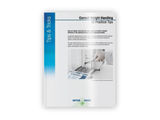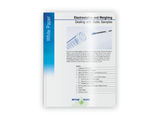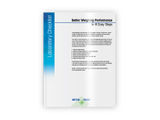To use all functions of this page, please activate cookies in your browser.
my.chemeurope.com
With an accout for my.chemeurope.com you can always see everything at a glance – and you can configure your own website and individual newsletter.
- My watch list
- My saved searches
- My saved topics
- My newsletter
Linda LongDr. Linda Long is a biochemist and musician, who has combined these two fields to create what she terms molecular music. Additional recommended knowledgeDr. Long worked as a biochemist and a Research Fellow in Complementary Medicine at Exeter University, specialising in the fields of homeopathy, herbal medicine and music therapy. Her work has been published in various medical journals, and she is an associate editor of the Journal Focus on Alternative and Complementary Therapies, published by the Royal Pharmaceutical Society of Great Britain[1]. She has been working on molecular music since the 1990s. She has been awarded an Invention and Innovation award over two years by NESTA[2]. This has enabled her to develop her promotion of music in education, as well as to release two CDs of her music: Music of the Plants and Music of the Body. The award has also helped her develop an exhibit at Explore @Bristol. Molecular musicMolecular music involves the translation of the 3-dimensional positions of a protein's amino acids into note sequences. This is not an arbitrary process; x-ray crystallography data is used to relate specific musical effects such as volume and pitch to the protein's molecular structure. In this way, characteristic patterns in protein structure are heard as as recognisable musical note patterns from the structural data. This method of translating protein structures into music is said by Dr. Long to be a useful aid in understanding proteins for the visually impaired. DiscographyMusic of the Plants (1999) is a CD of five tracks. Conventional track titling is eschewed in favour of a description of the specific protein used for each track:
Music of the Body (2002) is a longer CD, and the tracks have titles related to their relevant protein's function. as the title implies, all the proteins are found in the human body.
See also
|
| This article is licensed under the GNU Free Documentation License. It uses material from the Wikipedia article "Linda_Long". A list of authors is available in Wikipedia. |







